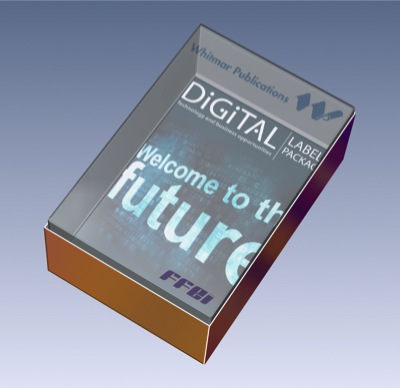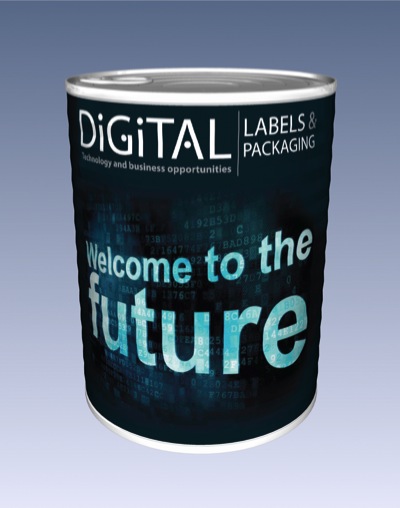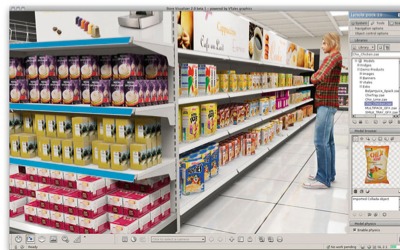Studio store visualizer
There is fantastic 3D simulation technology all around both on TV and in the cinema. Now labels and packaging suppliers are embracing the technology, which is integrated into workflows, and it is possible to do some very interesting things with it to improve the services offered to customers. Sean Smyth reports.
A valuable new application for 3D packaging visualisation is as part of anti-counterfeiting activity. Several high value pharmaceutical companies are sending 3D files of the latest export packs to customs officials in regions where counterfeit drugs are prevalent.
As they examine containers and individual packages, they can see a visualisation of the pack on a tablet or PC. This will show how individual boxes fit into secondary packs and highlight specific features, importantly batch identification, to provide an additional level of security.
Between 2006 and 2009, customs seized 7.5 million fake drugs at the point of entry into the European Union, and in, 2009 there were more than 11 million counterfeit or illegal medicines stopped.
Most would have been sold online by illegal and unethical companies, but some would have found their way into hospitals and chemists. Either way, this is putting patients at risk, so any new tools to help detection are useful and likely to be more widely used as authorities attempt to tackle this growing problem.
Simulation advantages
There are many other ways in which designers, brand owner or retailers and converters can take advantage of the many uses of 3D virtual packaging. The 3D model can be used as a quality check to ensure the artwork aligns, particularly useful in the design of shrink sleeves to ensure the anamorphic distortions have been set up correctly and will look perfect on the bottle or container.
Virtual mock-ups can help take time out of the creative cycle (although often a physical prototype is still required at some point). Access to the 3D design files allows all parties in the design and production cycle to have their say without the need to co-ordinate a meeting and environmental benefits are claimed.
A designer can generate several alternative 3D designs rapidly and straightforwardly, using the actual artwork files. Following the production rules, they can make sure the design is practical, functional and suitable for the manufacturing process involved.
The process creates a full simulation of the finished item that will be on sale including all factors. If, for instance, there is a clear window on the pack, the actual product shots can be added and transparency (and levels of translucency) can be incorporated into the design.
 DLP on a box created using RealVue 3D Packager (with thanks to FFEI)
DLP on a box created using RealVue 3D Packager (with thanks to FFEI)
How does it work?
The technology takes input from a CAD (computer aided design) file and places graphics around it. This could be the cutter lines and artwork for a carton or flexible pouch, or the model of a bottle or rigid plastic pack. They can be combined for lidding film, etc.
The system then combines the elements to provide a virtual 3D object, which can be exported as an image file or as an animated 3D model that users can interact with. It might be a simple PDF with a range of zoom and different angle view controls, or an interactive 3D file format, requiring a viewer application, to provide many more features including full animations.
There are proprietary viewers where a reader can be combined with the element (or easily downloaded from the web). Virtual reality modelling language is becoming a standard and most web viewers will display the resultant .jar files. As the use grows, communities such as the Collada (COLLAborative Design Activity) is developing standards, including a standard interchange file format sharing for interactive 3D applications.
It also provides a wide range of 3D models and environments where other 3D items can be placed. Users can view and explore the result, with some functions such as changing the ambient lighting or placing into a background. Depending on the functionality, animations can be produced. sharing for interactive 3D applications.
It also provides a wide range of 3D models and environments where other 3D items can be placed. Users can view and explore the result, with some functions such as changing the ambient lighting or placing into a background. Depending on the functionality, animations can be produced. A single chocolate bar could be wrapped in a flexible wrapper, then several placed into a multi-pack carton and secondary and tertiary packs shown. In the case of shelf ready packaging or a display stand, the animation might show how to assemble the display, possibly via a QR code or printed weblink.
Software for 3D rendering
FFEI is offering its RealVue 3D Packager, which is a plug-in to Adobe Illustrator CS3 or later. This is part of the new RealPro Toolkit that was launched at the Packaging Innovations show in February. The 3D model is dynamically updated from die-line and graphic layers as a design progresses, giving an instant interactive 3D visualisation with full print integrity.
Files can be exported to clients as high resolution JPEGs or interactively in a portable 3D format that provides viewing and annotation, in a standard web browser. It offers a multiviewpoint animated folding sequencefor cartons that allow all parties to view the construction of the final product from flat substrate to fully folded state.
Esko has its Studio, an integrated set of tools for packaging design to create 3D visuals, PDF files with 3D content to movies or a virtual packshot. It offers a range of 3D packaging models in the Shape Store, an online repository of shapes from cartons to rigid plastics, bottles and cans.
The store has about 100 objects, including bottles, cups, tubs, tubes, pouches, cans, wrappers, bags, egg cartons (even toilet paper), and Esko will quote for any bespoke shapes. Users with Studio or ArtiosCAD can apply their own artwork to any of these standard or designed shapes to generate 3D visuals quickly.
Studio has tools to help fit artwork precisely to the shape. There is a conical warp for labels, a tool to compensate artwork for complex shrink sleeve anamorphic distortions and for making artwork match across different panels. Individual items can be duplicated to see how the pack fits into secondary and tertiary packs.
The Studio Store Visualizer (developed by VTales Graphics) allows the 3D packaging to be placed into a virtual supermarket to see how it looks on a shelf beside the competition. Users can create a complete store, from selecting the type of flooring and ceiling to configuring isles and shelf layouts.
There is the option to take a 360° photograph of an actual store and insert virtual mock-ups as required that blend in well. Items can be placed onto shelves, even knocked off onto the floor. There is a free App for iPhone or iPad, so the 3D version can be viewed anywhere.
 DLP on a tin
DLP on a tin
Endless possibilities
More features are being added to the 3D software. The effect of alternative printing and finishing effects can be explored. A different substrate, spot or overall varnishing, lamination, foiling, embossing/debossing, braille or windowing are just some of the options that can all be compared quickly and iteratively.
Adding a money-off flash, a readable QR code or a language change is a simple artwork change, and it is easy to make multiple versions. As competition increases for label and packaging suppliers, offering 3D expertise can be a useful differentiator with customers. There are new chargeable services that can be offered, and 3D virtualisation provides a greater level of capability for converters to present proofs and concepts to customers more quickly, without having to create a hard copy proof or prototype.
Both FFEI and Esko allow interested parties to download a fully functioning trial version of their software so potential users can try before they buy and see how these new tools can benefit their customers. This offers a no-risk method of broadening the services provided by any label or packaging company that has a pre-press operation. While every pack shot is not necessarily an anti-counterfeit tool, there will be new useful applications that are valued by customers as well as taking time and cost out of the design and approval cycles.






